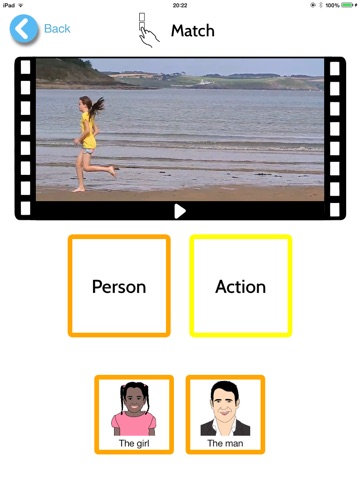
Actions In Video - Lite app for iPhone and iPad
Developer: Geraldine Moran
First release : 11 Feb 2014
App size: 460.51 Mb
Actions in Video is a ground-breaking new app created by a speech & language therapist/pathologist to work on actions (verbs) and basic sentence structures. This amazing speech and language therapy resource was designed for parents to support their child not only to learn but to transfer the skills learned to their child’s everyday environment. The app does this by using videos of real people doing these actions. This app is also a great resource for schools and therapy clinics.
Suitable for early language learners, pre-schoolers, children with emerging literacy skills, children with language delay and disorder, people with autism, Down syndrome, specific language impairment and those with other special needs who need this type of language support. This app is also visually appealing and suitable for adults with acquired brain injury, aphasia and those with word-finding difficulties.
Actions in Video is unique in that it combines a number of traditional therapy strategies to work on both the user’s understanding (receptive) and use (expressive) of key action words. These include visual strategies, video modelling, and colour-coded systems to support language development and the generation of grammatically correct sentence structures all in one easy to use app.
Features
•49 core actions based on research from the MacArthur Bates Communicative Development Inventories* and from the Down Syndrome Education* vocabulary checklists
•Real people demonstrating each action in 3 separate scenarios
•154 videos of actions modelled
•Person & action, and person, action & object sentence structures targeted
•Promotes vocabulary development
•Specially commissioned and trialled graphic symbols
•Colour coded visuals/images to support understanding and use of correct sentence structure
•Promotes errorless learning
•Mix of male, female, adult and child audio, modelling correct sentence production
•Record feature that allows users to repeat sentences
•In-app tutorial
•Free sample action packs allowing you to try before you buy
•Attractive visual presentation to appeal to both the child and adult user
•Levels of complexity can be increased, including the removal of colour-coded supports
*http://www.cdi-clex.org/
*http://www.down-syndrome.org
To find out more about Actions in Video visit our website: www.actionsinvideo.com



